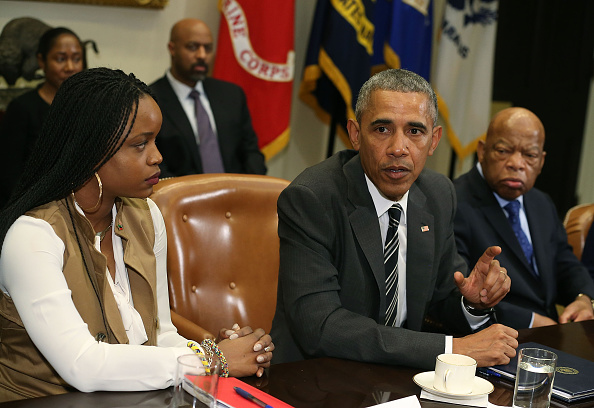
For over an hour on Thursday, 31-year-old activist and educator Brittany Packnett sat beside President Obama at a table in the Roosevelt Room of the White House for a unique meeting of the minds.
The nation’s first African American president convened a group of activists, both young and old, for a discussion on how he can spend his final year in office tackling issues that impact the black community—from criminal justice reform to police-community relations. Though one activist from Obama’s hometown of Chicago publicly slammed the meeting as a “photo opportunity and a 90-second sound bite for the president,” according to Packnett, the meeting was the complete opposite of that.
“We had a conversation that lasted over 90 minutes,” Packnett tells TIME. “The president actually extended himself because he wanted to continue the conversation. We had a lot of opportunity to elevate various strategies that are happening on the ground as far as criminal justice reform, working on police violence, and systemic educational inequities.”
Packnett is one of several young activists to emerge onto the national stage in the wake of the events in Ferguson. She was a key member of the movement around the Michael Brown shooting and she went on to serve on the President’s Task Force on 21st Century Policing, a body which released a report outlining some steps that could be taken to improve relationships between communities of color and the police. On Thursday, she sat alongside Al Sharpton, the founder and president of the National Action Network, Wade Henderson, the president of the Leadership Conference on Civil and Human Rights, and fellow protestor and Campaign Zero co-founder Deray McKesson for what the White House dubbed an “inter-generational” meeting.
The energy in the room, Packnett says, was spirited. Though those gathered made note of the historic nature of the meeting, there was a great sense of urgency among the leaders, both young and old, to make progress on a range of issues. Their conversation with the President included criminal justice reform, policing, voting rights and the nomination of a Supreme Court Justice. They also discussed use of force policies, including hog-tying and shoot-to-kill. According to Packnett, President Obama agreed to investigate those issues on the federal level.
“A lot of the conversation was not just about what can happen in the next ten months, but in the next 10 years as we come together and continue to do the work,” Packnett says. “One of the most important thing that the president said was for all of us to continue to focus on the work.”
Packnett made a point to say that because the Black Lives Matter movement is decentralized, there’s flexibility among those affiliated to use their voices in ways they see fit—a statement she said was not aimed at the Chicago activist who snubbed the event.
“We can utilize so many tactics. Protest is incredibly important. Policy is incredibly important,” Packnett said. “It was important that there were real protesters in the room today and that this White House has continued to engage with protestors and activists across the country.”
After the meeting, President Obama also called it a robust conversation, saying “there’s no better way for us to celebrate Black History Month.”
More Must-Reads from TIME
- Cybersecurity Experts Are Sounding the Alarm on DOGE
- Meet the 2025 Women of the Year
- The Harsh Truth About Disability Inclusion
- Why Do More Young Adults Have Cancer?
- Colman Domingo Leads With Radical Love
- How to Get Better at Doing Things Alone
- Michelle Zauner Stares Down the Darkness
Contact us at letters@time.com